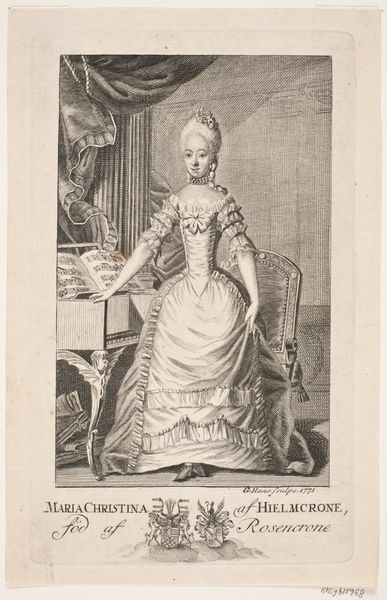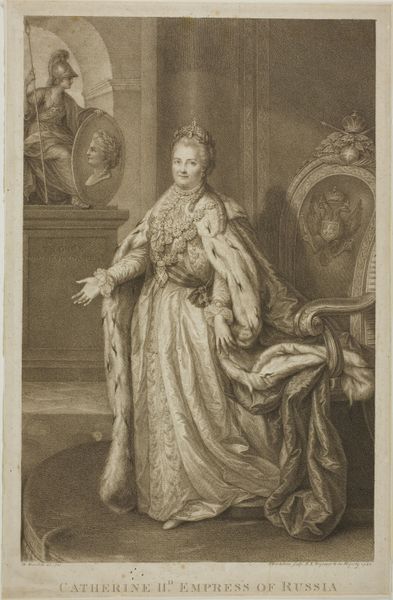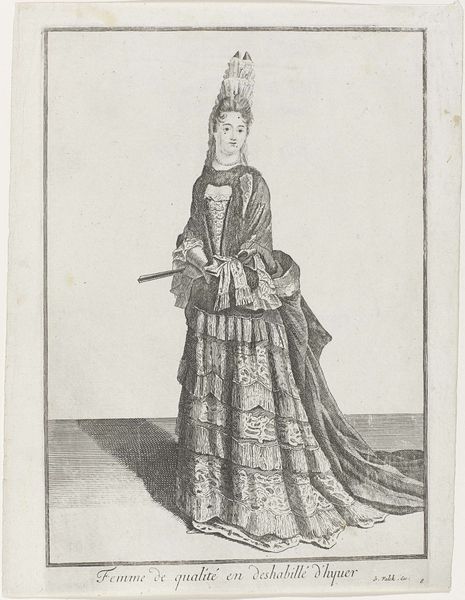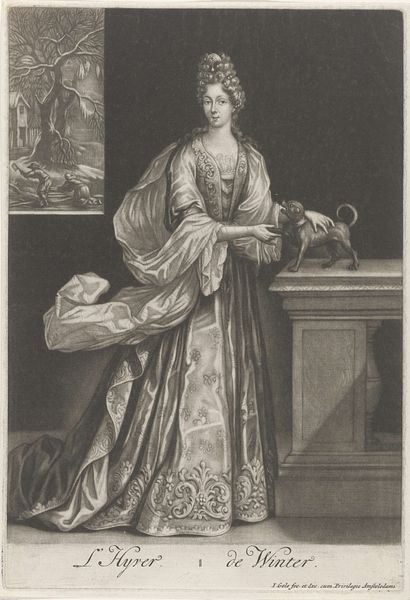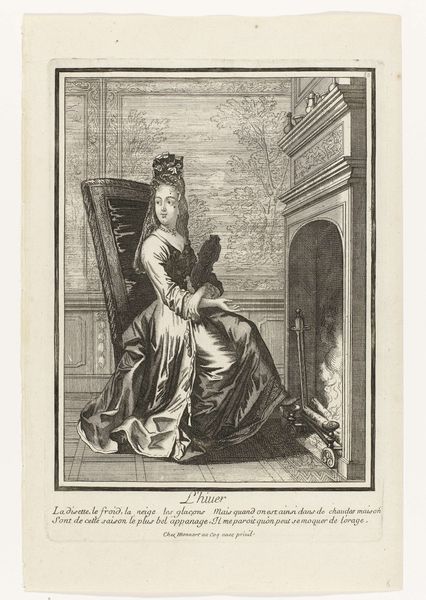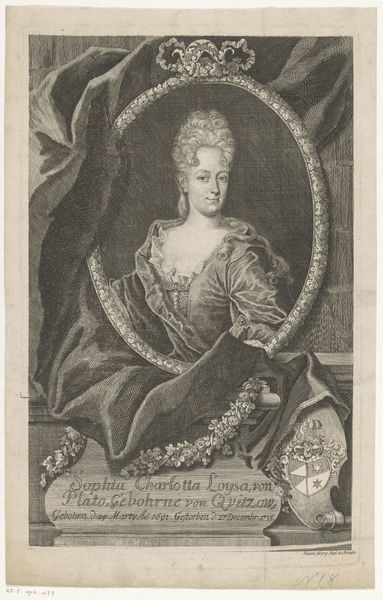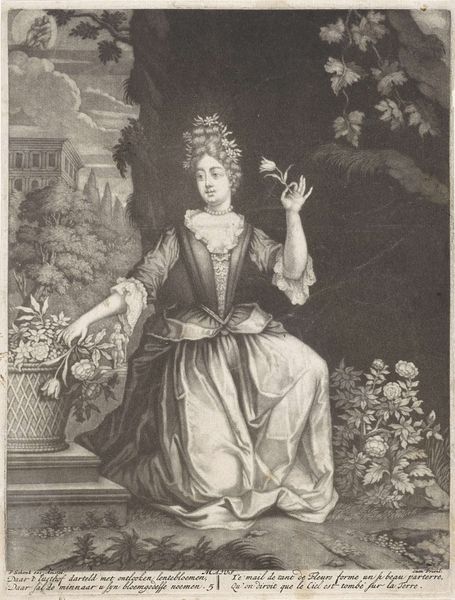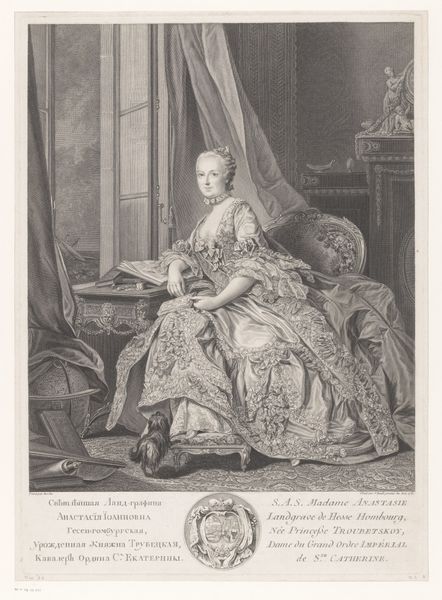
print, engraving
#
portrait
#
baroque
# print
#
old engraving style
#
france
#
history-painting
#
engraving
Dimensions: 11 1/4 x 8 in. (28.58 x 20.32 cm) (plate)
Copyright: Public Domain
Editor: This is "Madame la Princesse de Conty Douairiere," an engraving by Jean Mariette, dating back to about 1695. The level of detail Mariette achieved with line work alone is really incredible. She’s seated and holding what looks like a fan, in an opulent room. What strikes me is the tension between her regal presentation and what seems to me like a rather private moment. What do you make of it? Curator: The tension you perceive is compelling. This isn't just a portrait; it's a carefully constructed representation of power and widowhood within the French aristocracy. Consider the title "Douairiere"—it signifies her status as a dowager princess, a widow of considerable influence. How does the artist use visual cues to negotiate her public persona with her private self? Editor: Well, her dress is so elaborate, as is her headdress and chair… and the room in general. Curator: Exactly! The materiality surrounding her—the fabric, the architectural details, even the fire—speaks to a life of privilege and established societal position. Yet, her engagement with the fan is more introspective. The fan serves as a prop that reinforces societal norms, but its proximity to her face also invites consideration of individual expression and identity. Where do you think we find intersections of gender and power dynamics represented in this print? Editor: I guess the fact that she is painted as a woman in power shows she defied the patriarchal view of that time. Curator: Absolutely. It is interesting to note that even within a patriarchal framework, powerful women, particularly those who possessed wealth and status, could wield considerable influence. She maintains a presence and commands attention while adhering to certain gendered expectations. How might this image contribute to or challenge our understanding of women's roles in 17th-century France? Editor: That's fascinating. I came in thinking it was just a portrait, but now I see it as a statement about female power and societal expectations. Curator: Precisely. Art provides a lens to examine not just the surface, but also the complexities of social structures, power dynamics, and identity construction.
Comments
No comments
Be the first to comment and join the conversation on the ultimate creative platform.
